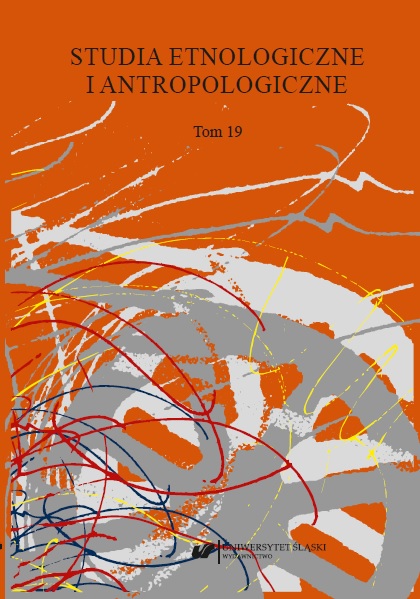Assman J.: Pamięć kulturowa. Pismo, zapamiętywanie i polityczna tożsamość w cywilizacjach starożytnych. Trans. A. Kryczyńska-Pham. Warszawa 2008.
Google Scholar
Banaszczyk T.: Studia o przedstawieniach zbiorowych czasu i przestrzeni w durkheimowskiej szkole socjologicznej. Wrocław–Warszawa–Kraków 1989.
Google Scholar
Bartnicka M.: Wyobrażenie przestrzeni i ich badanie. “Etnografia Polska” 1985, t. 29, z. 2, pp. 25–35.
Google Scholar
Bogatyriew P.: Semiotyka kultury ludowej. Warszawa 1979.
Google Scholar
Bogdanowski J.: Czytanie krajobrazu. “Krajobrazy Dziedzictwa Narodowego” 2000, No. 1, pp. 7–19.
Google Scholar
Dames M.: Merlin and Wales. A Magician’s Landscape. London 2004.
Google Scholar
Derungs K.: Mitologische Landschaft Schweiz. Mythos und Kult im Alpenland. Neuausgabe 2010.
Google Scholar
Durkheim E., Mauss M.: O niektórych pierwotnych formach klasyfikacji. Przyczynek do badań nad wyobrażeniami zbiorowymi. In: M. Mauss: Socjologia i antropologia. Warszawa 1993, pp. 703–870.
Google Scholar
Eliade M.: Sacrum, mit, historia. Warszawa 1993.
Google Scholar
Frampton K.: Towards a Critical Regionalism: Six Points of an Architecture of Resistance. In: The Anti-Aesthetic. Ed. Hal Foster. Port Townsend, Bay Press 1983.
Google Scholar
Gądecki J.: Architektura i tożsamość, rzecz o antropologii architektury. Złotoryja 2005.
Google Scholar
Halbwachs M.: Społeczne ramy pamięci. Trans. M. Król. Warszawa 1969.
Google Scholar
Hastrup K.: Przedstawianie przeszłości. Uwagi na temat mitu i historii. “Konteksty. Polska Sztuka Ludowa” 1982, No. 1–2, pp. 22–28.
Google Scholar
Jałowiecki B.: Przestrzeń jako pamięć. “Studia Socjologiczne” 1985, nr 2 (97).
Google Scholar
Jałowiecki B., Szczepański M.: Miasto i przestrzeń w perspektywie socjologicznej. Warszawa 2009.
Google Scholar
Lévy-Bruhl L.: Czynności umysłowe w społeczeństwach pierwotnych. Warszawa 1992.
Google Scholar
Lynch K.: The Image of the City. Cambridge, MA, 1960.
Google Scholar
Łotman J., Uspieński B.: O semiotycznym mechanizmie kultury. In: Semiotyka kultury. Selection and edition E. Janus, M.R. Mayenowa. Warszawa 1977.
Google Scholar
Serafin E., Serafin E.: Vicenza wtajemniczenie w naturę – w poszukiwaniu człowieka ekologicznego. “Literatura ludowa” 1998, nr 1 (42), pp. 37–54.
Google Scholar
Simmel G.: Filozofia krajobrazu. In: Most i drzwi. Warszawa 2006, pp. 165–179.
Google Scholar
Szot-Radziszewska E.: Emocjonalny wymiar przestrzeni. In: Kielce – kształtowanie przestrzeni współczesnego miasta z zachowaniem historycznych obrazów. Ed. E. Szot-Radziszewska.
Google Scholar
Kielce 2016 (Seria Monografie Politechniki Świętokrzyskiej. Architektura 5), pp. 17–27.
Google Scholar
Szot-Radziszewska E.: Obraz wsi w wyobrażeniach mieszkańców. Miejsca i ludzie. Kielce 2013 (Monografie, Studia, Rozprawy).
Google Scholar
Tilley C.: A Phenomenology of Landscape: Places, Paths and Monuments. Oxford 1994.
Google Scholar
Tuan Y.F.: Przestrzeń i miejsce. Warszawa 1987.
Google Scholar


 https://doi.org/10.31261/SEIA.2019.19.02
https://doi.org/10.31261/SEIA.2019.19.02

 10.31261/SEIA
10.31261/SEIA